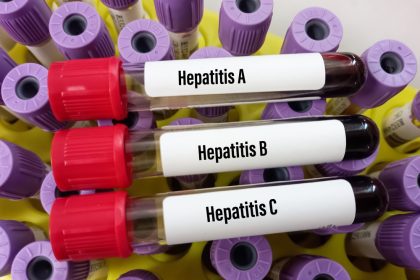When we think of identical twins, we often imagine mirror images — same face, same smile and perhaps even the same talents. But what surprises many is that these genetic carbon copies can have remarkably different experiences when it comes to their health.
From childhood illnesses to chronic diseases in adulthood, the journey each twin takes can vary significantly — and those differences can be both shocking and sobering.
Genetics isn’t the whole story
Identical twins start life with the same genetic blueprint. They come from one fertilized egg that splits in two, resulting in virtually indistinguishable DNA. But as science continues to evolve, researchers have found that genes are only one part of the puzzle.
Life experiences, habits, environmental exposures and even the position in the womb can send identical twins down two very different roads when it comes to physical and mental well-being.
Different experiences in the womb
Although they share a womb, identical twins often experience it differently. One might have better access to nutrients or more room to grow. Doctors have found cases where one twin is born stronger or heavier, while the other is more vulnerable to certain health challenges.
If one twin receives less oxygen or nutrients in the womb, that could set the stage for issues like cardiovascular disease, diabetes or developmental delays later in life. What begins in utero can ripple across a lifetime.
Epigenetics: the game-changer
Epigenetics is the study of how behaviors and environment can affect the way genes work. It’s not about changing DNA itself, but how genes are “turned on” or “off.”
Even in identical twins, factors like diet, stress, pollution or smoking can lead to these epigenetic changes. One twin might develop asthma or cancer while the other stays relatively healthy — not because their genes are different, but because how those genes express themselves is.
Over time, especially as twins age and live apart, these differences accumulate. Their epigenetic landscapes begin to drift apart, opening the door for different health outcomes.
How lifestyle habits create diverging paths
Habits, good or bad, can have a dramatic impact on health. If one twin smokes, drinks heavily or avoids exercise while the other prioritizes sleep, nutrition and wellness, their bodies will show the difference over time.
Doctors have noted cases where one twin develops heart disease while the other maintains pristine cardiovascular health — all because of how they chose to live.
Even small daily choices like water intake, sugar consumption or how much time is spent outdoors can stack up, influencing how the body fights inflammation, handles stress and maintains immunity.
Mental health takes its own path
Mental health is complex, and it often reflects a mix of biology and environment. Identical twins may have similar predispositions to conditions like anxiety, depression or ADHD, but whether those conditions surface — and how severe they become — can depend on life circumstances.
One twin might face bullying or trauma, while the other grows up with more emotional support. Over time, these experiences can deeply shape their resilience, coping strategies and mental wellness.
In studies, one twin has sometimes been diagnosed with schizophrenia while the other shows no signs of it, despite having the same genetic risk. This underscores the importance of nurturing environments and emotional care.
Illness, injury and immune system differences
Infections, surgeries and injuries can set off health spirals that vary between twins. For example, if one twin contracts a severe illness or suffers an injury that requires bed rest, it may lead to complications that alter their health path for years to come.
Likewise, exposure to viruses, bacteria or environmental toxins can trigger autoimmune reactions, chronic fatigue or even cancers in one sibling while sparing the other.
Immune systems, it turns out, are not cloned at birth. They are built and trained over time based on exposure, vaccination and diet. This is why one twin might frequently fall ill while the other rarely catches a cold.
Environmental and career influences
The type of work someone does — and where they live — matters tremendously for long-term health.
If one twin works in a high-stress job with little physical activity, long hours and poor sleep, while the other has a more balanced lifestyle, it can lead to everything from high blood pressure to burnout and chronic disease.
City living versus rural living, air quality, access to fresh food, social support and income all create disparities. Identical twins may be born the same but live in vastly different worlds.
Reproductive and hormonal differences
Even reproductive health can differ between twins. One may struggle with fertility issues like polycystic ovary syndrome (PCOS) or early menopause, while the other conceives naturally and carries pregnancies to term.
This might seem puzzling, but hormones are sensitive to stress, body fat percentage, sleep quality and environmental toxins. These factors can alter ovulation cycles, sperm quality and pregnancy outcomes, even among twins.
Aging at different speeds
One of the most striking observations among identical twins is that some age faster than others.
Research has found that by age 50, some twins looked significantly older — not just externally, but internally. Their cellular age, determined by telomere length and other biological markers, told a story of stress, inflammation and exposure.
Some twins have wrinkles, gray hair and joint issues earlier in life, while their sibling appears more youthful and agile. Again, lifestyle and environment seem to outweigh shared DNA in the race against time.
The role of gut health
Emerging science points to the gut microbiome — the trillions of bacteria in our digestive systems — as a major influence on our well-being.
Though identical twins are born with similar microbiomes, diet, environment, antibiotics and stress can shift the balance. One twin might develop obesity or inflammatory bowel disease while the other remains unaffected.
Gut health has been tied to conditions ranging from depression to cancer, making it one more area where twins can diverge despite their shared genes.
What twins teach us about health
The study of identical twins offers a powerful lens into how life, not just genetics, shapes us. They serve as a reminder that our fate is not sealed at birth.
Twins show us that we can take ownership of our choices, seek balance in stressful lives and commit to healthier routines that promote longevity and resilience. Even with shared DNA, every person’s story — and body — remains uniquely their own.
Stories of identical twins who walk different health paths often strike an emotional chord. One twin battling cancer while the other runs marathons. One needing a kidney transplant while the other remains disease-free. These stories can be heartbreaking — but they also offer hope.
They prove that we have power over our health beyond our genes. That choices matter. That self-care, love and support can make a real difference — even in situations where risk seems written in our DNA.
The bigger picture
Identical twins may enter the world with the same biological building blocks, but their lives — and their health — often unfold in profoundly different ways.
The diverging paths of twins remind us that health is a mosaic of choices, experiences and exposures. It’s a story written day by day, shaped by how we live, where we live and who we choose to become.
Whether you’re a twin or not, their stories offer one universal truth: we all have the power to influence our own well-being — no matter where we started.












